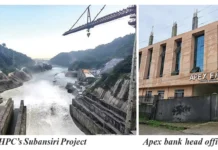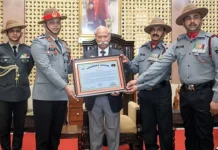NEW DELHI, 26 May: India on Monday unveiled a home-grown weather forecasting system with a spatial resolution of six km – the highest in the world – that would enable the weather office to issue more localised and accurate forecasts.
Developed by the Indian Institute of Tropical Meteorology (IITM), the Bharat Forecasting System (BFS) will be operational from this monsoon season and place India among the global leaders in weather prediction, Earth Sciences Minister Jitendra Singh said.
The BFS will be the only global numerical weather prediction system in the world deployed at such a high resolution, representing a major advancement in India’s forecasting capabilities.
The numerical global forecast models run by the European, British and US weather offices have a resolution between 9 km and 14 km.
“The tropical region is a chaotic region for weather. The change in weather patterns is unpredictable and higher resolution models are required to capture the spatial changes,” Earth Sciences Ministry Secretary M Ravichandran said.
“Earlier, we used to issue one forecast for four villages. The BFS will enable us to issue separate forecasts for each of the four villages,” he said.
Singh said that the BFS would boost monsoon tracking, aviation, cyclone monitoring and disaster management, agriculture, waterways, defence, and flood forecasting, and also support key ministries.
“A proud marker of our rise as the world’s fourth largest economy under Prime Minister Narendra Modi, this unique forecast system promises to supplement India’s economy by saving on potential losses and simultaneously adding on potential gains,” Singh said.
The new forecasting model, developed by researchers, including Parthasarathy Mukhopadhyay, was made possible due to the installation of the new supercomputer Arka at the IITM campus last year with a capacity of 11.77 petaflops and storage capacity of 33 petabytes.
“The previous supercomputer ‘Pratyush’ used to take up to 10 hours to run the forecasting model. Arka performs the same data-crunching within four hours,” Mukhopadhyay told PTI.
Ravichandran said the BFS provides insight into weather events likely to take place in a grid of 6 km by 6 km against the earlier models that gave predictions for a 12 km grid.
He said the data from a network of 40 Doppler weather radars from across the country will be used to run the BFS model that would enable the weather office to issue more localised forecasts and nowcasts.
Gradually, the number of Doppler radars will increase to 100, which would allow the weather office to issue nowcasts – weather forecasts for the next two hours – across the country.
The BFS can provide 6 km resolution forecasts for the tropical region that falls between 30 degrees south and 30 degrees north latitudes. The Indian mainland extends between 8.4 degrees north and 37.6 degrees north latitudes. (PTI)




